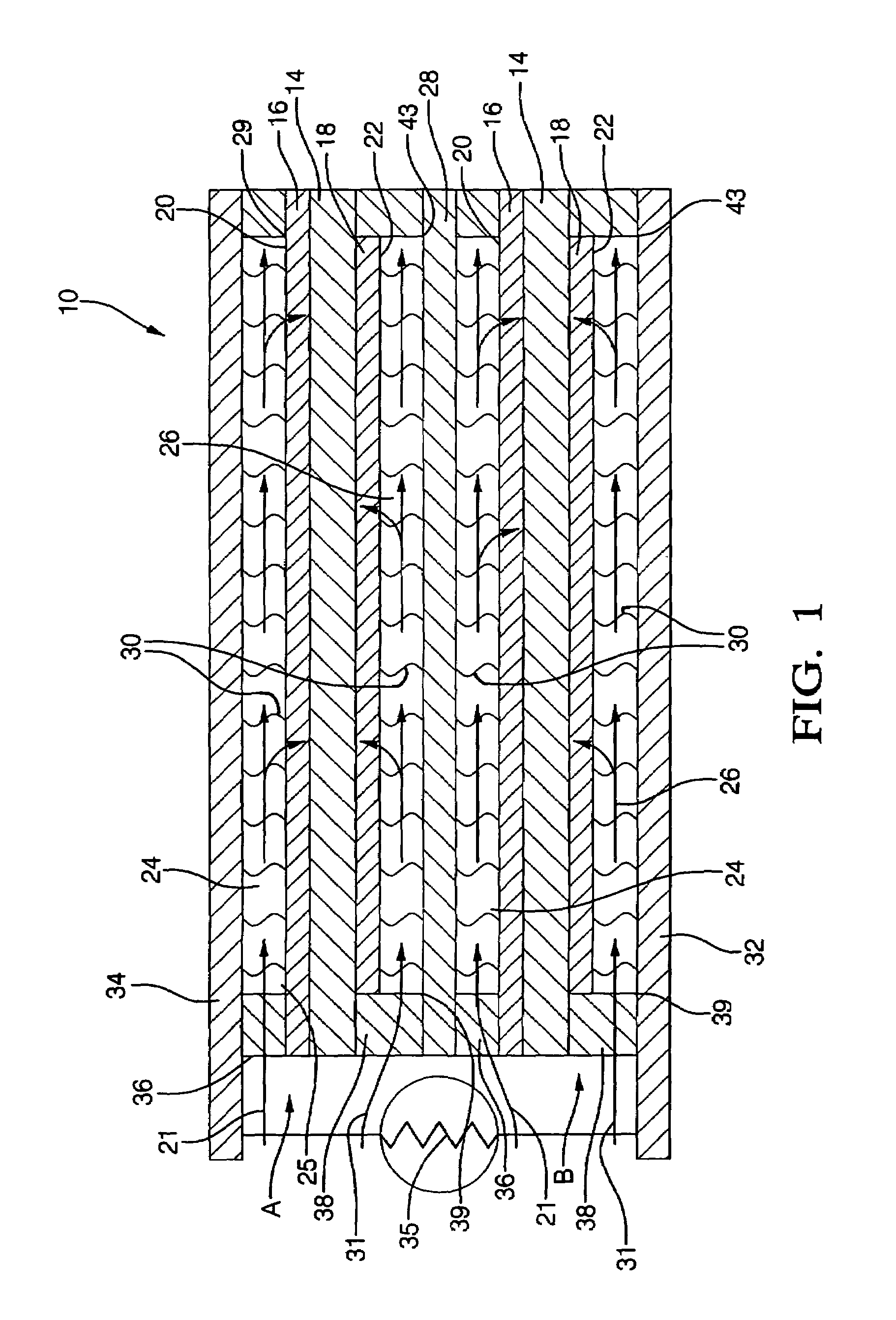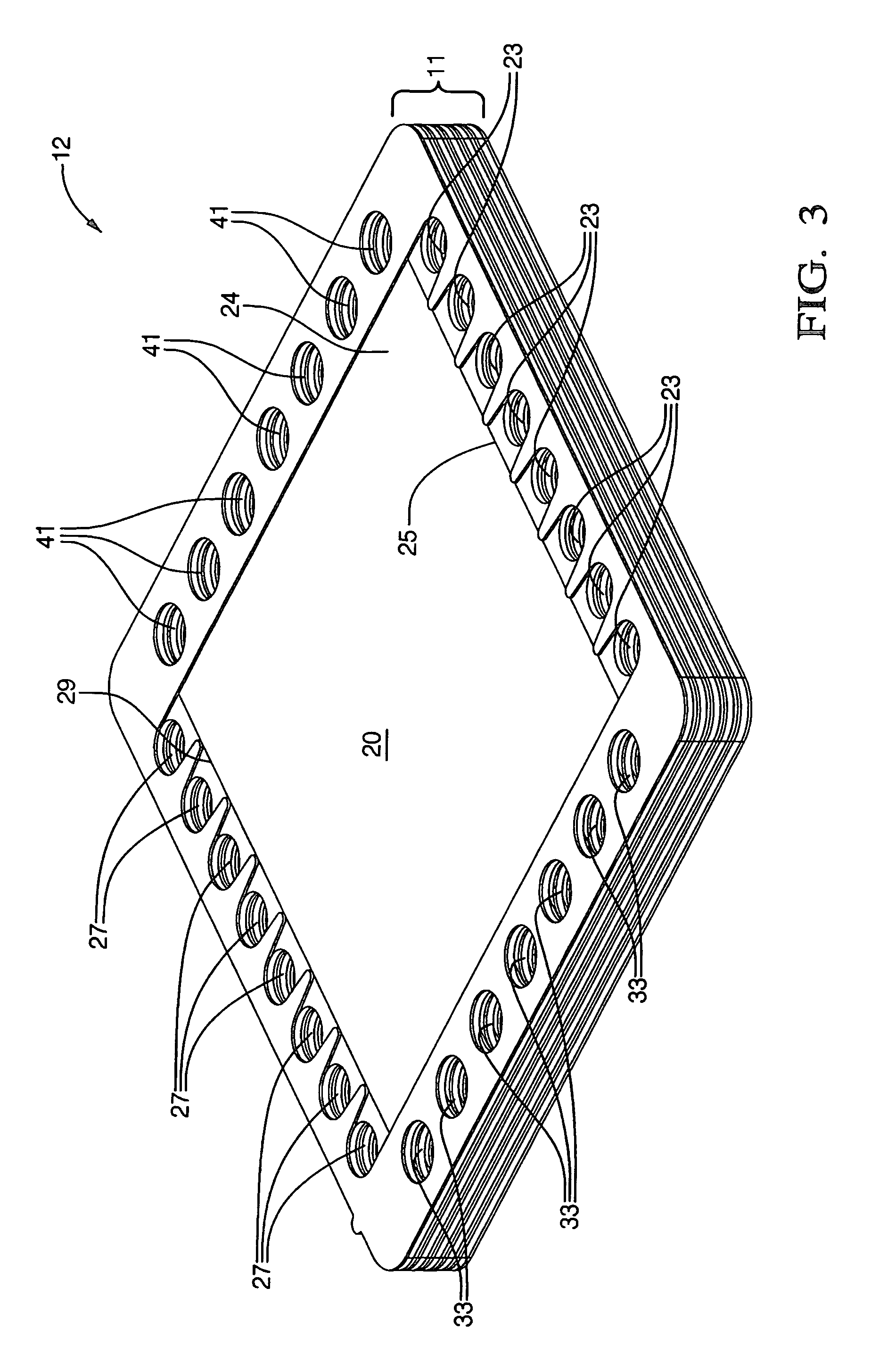Fuel cell having optimized pattern of electric resistance
- Summary
- Abstract
- Description
- Claims
- Application Information
AI Technical Summary
Benefits of technology
Problems solved by technology
Method used
Image
Examples
first embodiment
[0039]In a first embodiment, the chemical composition of either the cathode or the anode itself is varied regionally to increase or decrease local conductivity. The cathode comprises, for example, a chemical composition of lanthanum strontium manganate of lanthanum strontium iron. In the embodiment, the atomic proportion of lanthanum to strontium in the composition is varied across the cathode non-uniformly so that the atomic proportion is increased in regions of the cathode where high concentrations of hydrogen are found to exist. For example, in areas of high hydrogen concentration where greater conductivity is desired, the atomic proportion of lathanum to strontium may by 80% to 20%, respectively, while in areas of low concentration, the proportion would be reversed. The chemical composition of the anode can also be varied. The anode comprises a mixture of a conductive material, for example, nickel, and a dielectric material, for example YSZ. The nickel percentage is varied non-u...
seventh embodiment
[0045]Typically, the thickness of the electrolyte element is approximately 1 micron. In a seventh embodiment, the thickness of the electrolyte element is varied regionally to increase or decrease local conductivity. Where areas of low hydrogen concentration exists, the electrolyte is made thicker to decrease conductivity, and vice versa. The proper thickness gradient for a given fuel cell stack are readily determinable without undue experimentation.
[0046]Techniques for forming the dielectric deposits on the anodes, cathodes, interconnects, and current collectors, for varying the thickness of the electrolyte element, for forming protrusions on the interconnects and current collectors, and for varying the nickel content of the anodes, or the atomic proportions of the lanthanum and strontium of the cathode in the embodiments just recited are well within the skill of one skilled in the art of fuel cell manufacture; therefore, such techniques need not be recited here.
[0047]Also, in the e...
PUM
 Login to View More
Login to View More Abstract
Description
Claims
Application Information
 Login to View More
Login to View More - R&D
- Intellectual Property
- Life Sciences
- Materials
- Tech Scout
- Unparalleled Data Quality
- Higher Quality Content
- 60% Fewer Hallucinations
Browse by: Latest US Patents, China's latest patents, Technical Efficacy Thesaurus, Application Domain, Technology Topic, Popular Technical Reports.
© 2025 PatSnap. All rights reserved.Legal|Privacy policy|Modern Slavery Act Transparency Statement|Sitemap|About US| Contact US: help@patsnap.com



